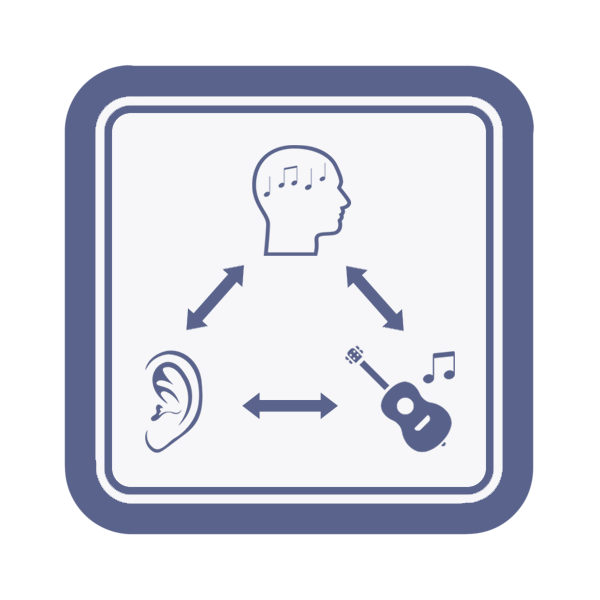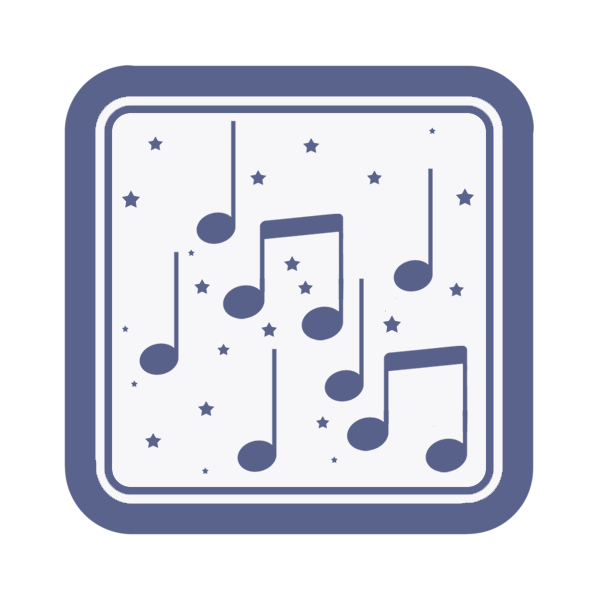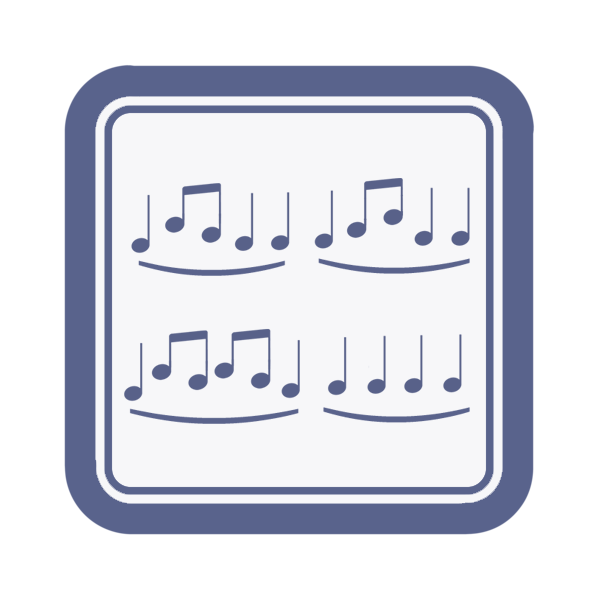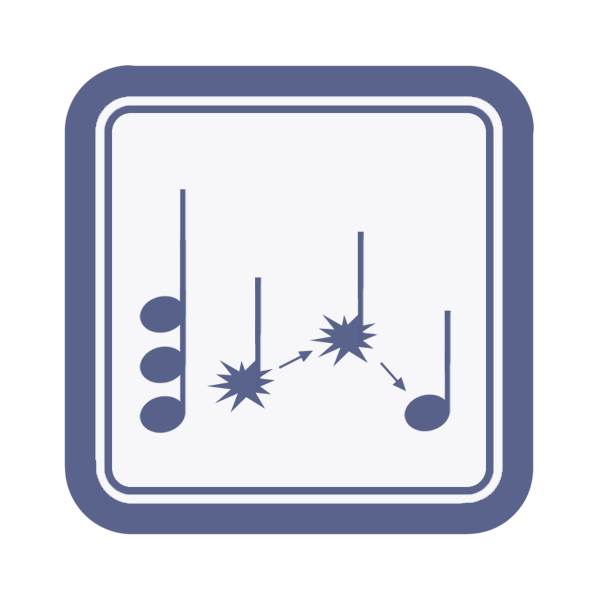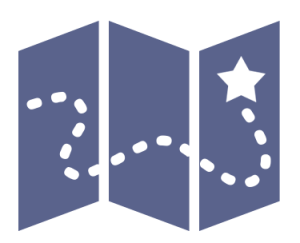
Roadmap:
Learn to Improvise
This is a preview of a Musical U Roadmap.
Roadmaps are a “big picture” guide to developing a particular musical skill. Learn more about Roadmaps here.
This roadmap will help you learn to improvise your own music and interact with others in an improvisational context.
Improvisation and playing by ear are two very closely related skills. In fact, improvisation can be defined as “playing by ear the music you hear in your head”. Improvising will help you improve your ability to play by ear, and playing by ear will improve your ability to improvise.
Accordingly, you may want to spend some time with the Play Melodies By Ear (Solfa) or Play Melodies By Ear (Intervals) roadmaps before launching into improvisation.
By the end of this roadmap, you will be able to improvise melodies on your instrument in a spontaneous, freely creative way which also fits within the structure of a given piece of music.
The main topics to explore (both for and through improvisation!) are Rhythm, Melodies, and, later, Chord Progressions.
Improv Practice
Throughout your journey, you can make use of the Improvisation Practice module which provides a library of backing tracks to support your growing skills and creativity.
Requirements
To use this roadmap effectively you should complete the following modules before you start:
Phase 1: Fundamentals
Phase Accomplishments
- Transform your mindset about improvising.
- Learn the two main approaches to improvisation.
The biggest barrier that currently stands between you and improvising is not instrument skill or music theory knowledge or a gift of “talent”. In fact, the biggest barrier is simply the belief that improvisation is something that “other musicians” can do and you can’t.
Improvisation requires a different mindset than playing pre-written music. To learn more about that mindset, start by taking the Approaching Improvisation module:
If you have difficulty
As always, if you have specific questions about something in a module, you can ask in the end-of-module Discussion.
At this point, it’s more about developing a sense of what improvisation is in the first place, and in what ways it’s similar and different than other forms of music making. So don’t worry if your improvs at this stage don’t sound good to you yet! As you explore the components in more depth in the next phases of this roadmap, you will sound better and better.
Start This Roadmap Today!
Get instant access to the full Roadmap and every training module included when you join Musical U today.
Phase 2:
Phase Accomplishments
- Learn about the essential elements (or “dimensions”) of melody.
- Explore those melodic elements to enhance your improv.
Melody consists of two basic dimensions:
- Pitch
- Rhythm
We’ve explored a pattern of pitches with the pentatonic scale. In our next improv module, we’ll begin with the dimension of rhythm and then bring back the pentatonic scale:
If you found that, during the course of the Improvising Melody module, you were running out of rhythmic ideas, you may want to spend some time at this point with our rhythm modules – such as Speak Rhythms or Rhythm Practice – or work your way through Phase One and Phase Two of our Get Rhythm roadmap.
Improvisation Practice
The Drone Tracks, Latin Tracks, and Blues Tracks in this module will be very useful in extending the learning from this phase.
If you have difficulty
If you have specific questions about something in a module, you can ask in the end-of-module Discussion.
Also, feel free to post a recording of your playing in your Progress Journal. We’d love to hear what you’re doing, and it can help us give you further guidance.
Phase 3: Phrasing and Structure
Phase Accomplishments
- Learn how to shape meaningful melodies with various musical dimensions.
- Raise your awareness of musical structures to frame your improv.
Phrases are smaller units of melody – each with a beginning, middle, and end – which combine together to form a melody. When we put our attention on shaping these phrases, we create meaningful music that breathes.
We have already explored phrasing to an extent, using the dimensions of rhythm and pitch to create short improvised pieces of melody. Now let’s go deeper on phrasing, adding the dimensions of dynamics, articulation, and silences.
We’ll also see how these smaller units of musical structure combine to form larger sections that call and respond to each other.
At this point, you may want to review the Rule of Threes exercise in the Repetition and Variation lesson of the Improvising Melody module.
If you have difficulty
If you have any specific questions about something in a module, you can ask in the end-of-module Discussion.
A lot of musicians, even quite accomplished improvisers, don’t give a lot of conscious attention to phrasing. Some people pick it up naturally through a lot of listening.
However, bringing your awareness to phrasing and structure – even a little bit – can make your improvs much more interesting to both and your listener (as compared to the endless bland stream of notes that characterizes many beginning improvisers who have all their attention on scales and chords).
So if you’re having difficulty with the concepts of phrasing and structure in improvisation, take in what you can, and maybe come back to it later after doing some listening. And you can always reach out to the Musical U team and community for help, guidance, and encouragement.
Phase 4: Improvising over Chord Progressions
Phase Accomplishments
- Learn how to relate your improvisation to chord tones.
- Learn how to choose scale tones to create tension and release.
- Practice improvising over simple chord progressions.
Focusing on melody first in your improv will give you a much stronger connection with a meaningful musical line. But at some point, you may want to fit that line to the surrounding harmonic structure of a piece of music – putting your improv in context.
Many times this is the first thing beginning improvisers think about – how am I going to make my solo fit over the chords? And many improv teachers start here.
But without the musicality work on phrasing, constraints, and really hearing what you’re doing, you can hit every chord change perfectly and still play a perfectly boring solo.
So if you’ve put some good attention on the learning from Phases 1-4, you’ll be much better equipped to make real music out of your harmonic explorations in Phase 5.
If you’re not familiar with basic I-IV-V and I-IV-V-vi progressions, you may want to take a detour to Phases One and Three of the Play Chords by Ear Roadmap. Of course, the more you can play by ear, the more confident you’ll feel in your improvisation – but it’s not that important at this phase that you go beyond recognizing a few basic progressions.
That being said, improvisation is an excellent tool for learning and exploring chord progressions (and any other musical learning step, for that matter). So if you’re eager to continue with that roadmap, feel free!
Chord Tones
When improvising over a chord progression, the actual notes in the chords provide a good framework to guide your improvisation. Learning how to hear and navigate your way through the harmonic structure of a song will help your improv to sound more grounded and relevant to the musical context that surrounds it.
Improvisation Practice
Practice the exercises from the Improvising with Chord Tones module with three more tracks based on the “Halo” progression.
Harmonic Tension and Release
After you have a good “aural map” (and “instrument map” as well) of where the chord tones are, you can start exploring the surrounding territory. Non-chord scale tones add varying degrees of tension as they release towards the chord tones.
When you learn to improvise with scales in this manner, you will gain a deep understanding of their inner harmonic architecture, which will add considerably to your musical ear.
Improvisation Practice
A full range of three- and four-chord progressions in various musical styles await you as you continue your study of improvising over chord progressions.
If you have difficulty
If you have any specific questions about something in a module, you can ask in the end-of-module Discussion.
Improvising over Chord Progressions doesn’t have to be difficult, but it does require some ear development and some theory knowledge. The Play Chords by Ear Roadmap can help you develop that. Reviewing the Rock Your Scales and Chords section (in many keys) of the Improvising with Chord Tones module can help you gain more awareness of where to find everything you’re looking for on your instrument.
And remember: the Musical U team is always ready to jump in and give a helping hand!
Start This Roadmap Today!
Get instant access to the full Roadmap and every training module included when you join Musical U today.

